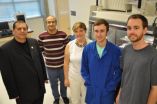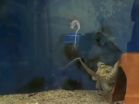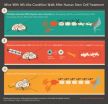(Press-News.org) St. Jude Children's Research Hospital scientists have mapped the structural details of how p53 attaches to its regulatory protein, called BCL-xL, in the cell. The protein p53 is a key activator of the cell's protective machinery against genetic damage, such as the mutations that drive cancer cells' explosive growth.
The detailed understanding of how these two molecular puzzle pieces fit together will help scientists design drugs that release p53 in cancer cells, triggering their suicide, called apoptosis.
The findings appear in the current online journal Nature Structural & Molecular Biology. The research was led by co-corresponding authors Richard Kriwacki, Ph.D., a member of the St. Jude Structural Biology department, and Douglas Green, Ph.D., chair of the St. Jude Immunology department.
In guarding the cell against genetic damage, the p53 machinery functions both in the nucleus of the cell and in the cell's gel-like cytosol. When this machinery detects irreparable damage to the cell, p53 is unleashed to trigger apoptosis. In about half of all cancers, this machinery is rendered inoperable by mutation of p53, enabling cancer cells to proliferate despite their genetic malfunctions.
The protein BCL-xL is a central inhibitor of the p53 machinery, binding both p53 and other molecules—called BH3 proteins—that also drive apoptosis.
"The molecular details of how BCL-xl performs this dual inhibitory function were not understood," Kriwacki said. "Having those details has enabled us to determine exactly how BCL-xl can restrain or inhibit apoptosis through interactions with BH3-domain-containing proteins, as well as p53."
In their studies, the researchers used a structural analysis technique called NMR spectroscopy to map the 3-D structure of p53 binding to BCL-xL. Their experiments also revealed in detail how one region of the p53 protein, called the DNA-binding domain, serves double duty in the machinery. It enables p53 to attach to DNA in the cell's nucleus, helping the cell repair genetic damage. The same domain also acts as an attachment point for BCL-xL in the cytosol.
"The structural details that we report are novel," Kriwacki said. "And they provide the key insights for really dissecting the dual roles of BCL-xl in inhibiting apoptosis. Those roles are inhibiting the BH3-containing proteins on the one side, and p53 on the other. Also, through these studies we solidified the mechanistic understanding for how p53 functions in the cytosol, which complements its pro-apoptotic role in the nucleus."
The findings will help scientists design cancer-fighting drugs, Kriwacki said. In many cancers, p53 is prevented from triggering apoptosis by its attachment to BCL-xL. Drugs are currently being tested that bind to BCL-xL to free BH3 proteins to trigger apoptosis. However, Kriwacki said, new drugs could be developed—based on knowledge of p53's attachment to BCL-xL—that also block BCL-xL from binding p53.
"Our hypothesis is that many cancers have normal p53, but it is being tied up by BCL-xL," he said. "If it could be released, it could play its role in triggering apoptosis. A drug that could block both of BCL-xL's anti-apoptotic functions could potentially more profoundly induce apoptosis in cancer cells."
Kriwacki also said that the paper was significant because it emphasizes the importance of the role that p53 plays in the cytosol of the cell, in addition to its role in the nucleus; his further studies are seeking to map that molecular machinery in great detail.
INFORMATION:
The paper's first author is Ariele Viacava Follis, Ph.D., a St. Jude postdoctoral fellow. The other authors are Li Ou, Fabien Llambi and Katherine Baran, all of St. Jude.
The research was sponsored by grants (CA082491, GM083159, GM52735, GM96208) from the National Institutes of Health; a grant (CA21765) from the National Cancer Institute, part of the NIH; and ALSAC.
Detailed studies reveal how key cancer-fighting protein is held in check
St. Jude Children's Research Hospital analysis reveals how the protein p53, which triggers cancer cells to commit suicide, attaches to its regulatory molecule; findings could lead to drugs to unleash p53 to battle a range of cancers
2014-05-15
ELSE PRESS RELEASES FROM THIS DATE:
Researchers examine intersection of aging, chronic disease
2014-05-15
A new collection of articles appearing in The Journals of Gerontology, Series A: Biological Sciences and Medical Sciences examine how the basic biology of aging drives chronic disease. Together, they highlight the value of the emerging field of geroscience, which uses an integrated approach to the study of diseases and disability associated with growing older.
Geroscience seeks to bridge the divide between studies of aging and studies of chronic disease, with the hope of understanding their complex relationship and pointing the way to novel interventions for disease, ...
Silly Putty material inspires better batteries
2014-05-15
RIVERSIDE, Calif. (http://www.ucr.edu) — Using a material found in Silly Putty and surgical tubing, a group of researchers at the University of California, Riverside Bourns College of Engineering have developed a new way to make lithium-ion batteries that will last three times longer between charges compared to the current industry standard.
The team created silicon dioxide (SiO2) nanotube anodes for lithium-ion batteries and found they had over three times as much energy storage capacity as the carbon-based anodes currently being used. This has significant implications ...
Going beyond the surface
2014-05-15
BUFFALO, N.Y. – Photodynamic therapy (PDT) is an effective treatment for easily accessible tumors such as oral and skin cancer.
But the procedure, which uses lasers to activate special drugs called photosensitizing agents, isn't adept at fighting cancer deep inside the body. Thankfully, that's changing due to new technology that could bring PDT into areas of the body which were previously inaccessible.
Described May 11 in the journal Nature Photonics, the approach involves using near-infrared beams of light that, upon penetrating deep into the body, are converted into ...
How octopuses don't tie themselves in knots
2014-05-15
VIDEO:
An octopus is treating its own freshly amputated arm in a strange and exploratory manner that is not commonly seen with respect to food items. Note the 'startle' response of...
Click here for more information.
An octopus's arms are covered in hundreds of suckers that will stick to just about anything, with one important exception. Those suckers generally won't grab onto the octopus itself; otherwise, the impressively flexible animals would quickly find themselves all tangled ...
First test of pluripotent stem cell therapy in monkeys is a success
2014-05-15
Researchers have shown for the first time in an animal that is more closely related to humans that it is possible to make new bone from stem-cell-like induced pluripotent stem cells (iPSCs) made from an individual animal's own skin cells. The study in monkeys reported in the Cell Press journal Cell Reports on May 15th also shows that there is some risk that those iPSCs could seed tumors, but that unfortunate outcome appears to be less likely than studies in immune-compromised mice would suggest.
"We have been able to design an animal model for testing of pluripotent ...
Mice with MS-like condition walk again after human stem cell treatment
2014-05-15
(SALT LAKE CITY) - Mice severely disabled by a condition similar to multiple sclerosis (MS) were able to walk less than two weeks following treatment with human neural stem cells. The finding, which uncovers potential new avenues for treating MS, will be published online on May 15, 2014, in the journal Stem Cell Reports.
In striking contrast to active, healthy mice, those with an MS-like condition must be fed by hand because they cannot stand long enough to eat and drink on their own. When scientists transplanted human neural stem cells into the MS mice, they expected ...
Not just a pretty face, although that helps female politicians on election day
2014-05-15
Female politicians' success can be predicted by their facial features, especially in conservative states where women with more feminine faces tend to do better at the ballot box, a Dartmouth College-led study finds.
The results don't mean a supermodel will win the White House, but they do suggest women's electoral success requires a delicate balance between voters' perception of traditional femininity and political competence. The study appears in the journal Social Psychological and Personality Science. A PDF of the study is available on request. Here is a video animation ...
Stem cell therapy shows promise for MS in mouse model
2014-05-15
LA JOLLA, CA—May 15, 2014—Mice crippled by an autoimmune disease similar to multiple sclerosis (MS) regained the ability to walk and run after a team of researchers led by scientists at The Scripps Research Institute (TSRI), University of Utah and University of California (UC), Irvine implanted human stem cells into their injured spinal cords.
Remarkably, the mice recovered even after their bodies rejected the human stem cells. "When we implanted the human cells into mice that were paralyzed, they got up and started walking a couple of weeks later, and they completely ...
Genetic tracking identifies cancer stem cells in human patients
2014-05-15
The gene mutations driving cancer have been tracked for the first time in patients back to a distinct set of cells at the root of cancer – cancer stem cells.
The international research team, led by scientists at the University of Oxford and the Karolinska Institutet in Sweden, studied a group of patients with myelodysplastic syndromes – a malignant blood condition which frequently develops into acute myeloid leukaemia.
The researchers say their findings, reported in the journal Cancer Cell, offer conclusive evidence for the existence of cancer stem cells.
The concept ...
Combination therapy a potential strategy for treating Niemann Pick disease
2014-05-15
CAMBRIDGE, Mass. (May 15, 2014) – By studying nerve and liver cells grown from patient-derived induced pluripotent stem cells (iPSCs), Whitehead Institute researchers have identified a potential dual-pronged approach to treating Niemann-Pick type C (NPC) disease, a rare but devastating genetic disorder.
According to the National Institutes of Health (NIH), approximately 1 in 150,000 children born are afflicted with NPC, the most common variant of Niemann-Pick. Children with NPC experience abnormal accumulation of cholesterol in their liver and nerve cells, leading to ...
LAST 30 PRESS RELEASES:
Whooping cough vaccination for pregnant women strengthens babies’ immune system
Dramatic decline in new cases of orphanhood in Uganda driven by HIV treatment and prevention programs
Stopping weight loss drugs linked to weight regain and reversal of heart health markers
Higher intake of food preservatives linked to increased cancer risk
Mass General Brigham–developed cholera vaccine completes phase 1 trial
First experimental validation of a “150-year-old chemical common sense” direct visualization of the molecular structural changes in the ultrafast anthracene [4+4] photocycloaddition reaction
Lack of support for people on weight loss drugs leaves them vulnerable to nutritional deficiencies, say experts
Dogs’ dinners can have greater climate impact than owners’
Are you ready to swap salmon for sprats and sardines?
1.6 million UK adults used weight loss drugs in past year
American College of Cardiology comments on new dietary guidelines for Americans
American Society of Gene & Cell Therapy and Orphan Therapeutics Accelerator partner to advance and commercialize promising rare disease treatments
One in 14 patients having day case surgery have new or worse chronic pain 3 months after their operation
New study highlights link between eviction rates and gun violence
Heatwaves heat up soil but not toxin levels in rice, study finds
Digital modeling reveals where construction carbon emissions really come from
Turning farm waste into water filters
New study shows how the spleen helps the immune system accept a transplant
New Mayo Clinic study advances personalized prostate cancer education with an EHR-integrated AI agent
Researchers identify novel therapeutic target to improve recovery after nerve injury
Microbes in breast milk help populate infant gut microbiomes
Reprogramming immunity to rewrite the story of Type 1 diabetes
New tool narrows the search for ideal material structures
Artificial saliva containing sugarcane protein helps protect the teeth of patients with head and neck cancer
Understanding the role of linear ubiquitination in T-tubule biogenesis
Researchers identify urban atmosphere as primary reservoir of microplastics
World’s oldest arrow poison – 60,000-year-old traces reveal early advanced hunting techniques
Bristol scientists discover early sponges were soft
New study uncovers how rice viruses manipulate plant defenses to protect insect vectors
NSF–DOE Vera C. Rubin Observatory spots record-breaking asteroid in pre-survey observations
[Press-News.org] Detailed studies reveal how key cancer-fighting protein is held in checkSt. Jude Children's Research Hospital analysis reveals how the protein p53, which triggers cancer cells to commit suicide, attaches to its regulatory molecule; findings could lead to drugs to unleash p53 to battle a range of cancers



